So you’ve got a broken window, leaky pipe, or other home repair problem and you’re not sure what to do? We’ve all been there before. The DIY community has long been a place where people can get advice and tips to help them complete home repairs on their own. However, there are always new skills that we learn over time that make the process easier, faster or more efficient. In this blog post, we outline 50 hacks for homeowners of all skill levels to use when they tackle household repairs around the house.
Get Some Superglue to Keep Screws Together
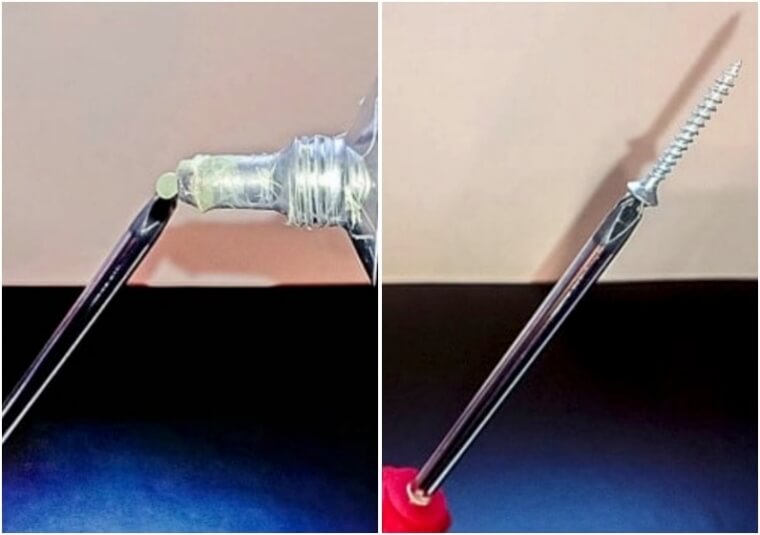
Installing basic screws can be a difficult task for many individuals due to issues such as slippage, rolling, or falling off. The level of difficulty escalates when one needs to install screws at a specific angle. This is where the ingenious home repair hack involving super glue comes into play.
To prevent screws from slipping, try applying rubber glue to the tip of your screwdriver. This easy hack will ensure a secure grip and make your installation process much smoother. By using this technique, you can save both time and effort.
Nail Holes Can Easily Be Filled With Toothpaste
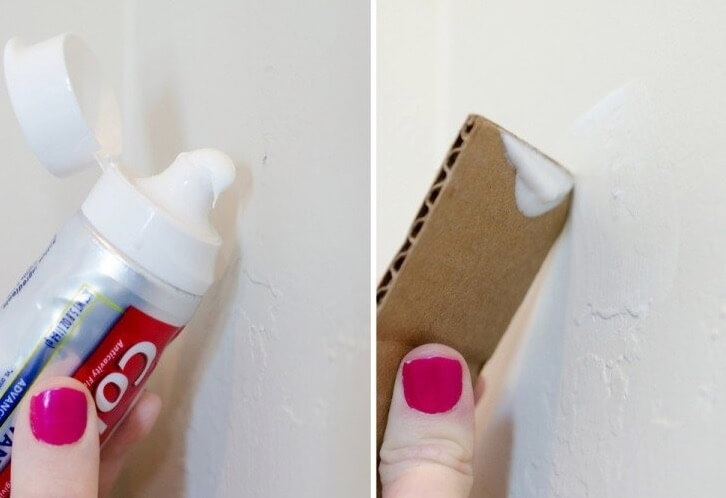
When people leave a place, they take their belongings, such as pictures, art, and frames on the walls. However, when you move into the same place, you might find many holes in the walls because of this ordeal. You don’t need to worry because there is an easy home repair hack for this.
To fix the holes, just apply some white toothpaste, ensuring that it matches your wall color. This way, it will seamlessly blend in with the walls. Additionally, performing this task before you move out is a proactive approach to prevent any deductions from your security deposit.
Restore Wood Furniture with Coffee Grounds
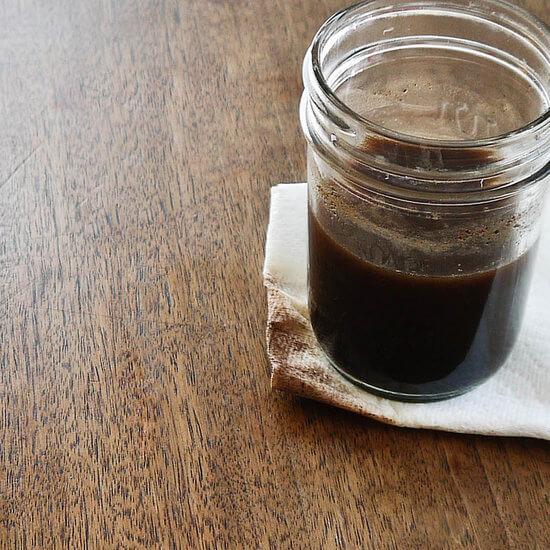
Taking care of our furniture is essential as it contributes to the desired ambiance in our homes. We have all experienced accidents like spilling drinks and various other substances on our furniture. Although cleaning some of these mishaps can be tricky, you can effectively employ coffee grounds to address spills on unfinished wood furniture.
In a short amount of time, your furniture can regain its original appearance by gently applying coffee grounds onto the damaged area. The coffee grounds naturally create a brown shade that seamlessly blends with the furniture, eliminating the need for any painting.
A Super Simple Way to Protect Your Fingers While Hammering

Do you experience fear when it comes to accidentally hammering your fingers instead of the intended nails on the wall? If so, we have an ideal solution for you in the form of a home repair hack that will greatly simplify your life. This technique will enable you to securely hammer any object you desire without risking harm to yourself.
To facilitate this hack, you have the option of utilizing bobby pins, clothes pegs, or similar items. For instance, if you opt for a clothes peg, you can secure the nail between the peg and proceed to hammer. This method will provide finger protection and ensure your safety while nailing and hammering.
Before Cutting Tiles, Soak Them
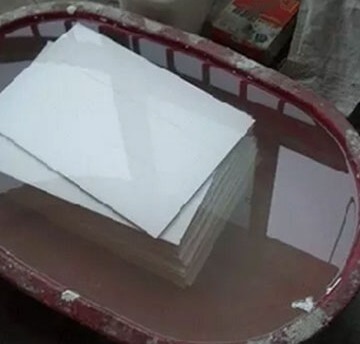
If you have plans to cut tiles in the near future, this ingenious home repair trick will swiftly simplify your life. You will not only save considerable time, but also exertion and money in the grand scheme as you can effortlessly carry out this task at home. Commence the procedure by creating a puncture or pre-existing incision in the tiles.
Following that, ascertain the required quantity and commence the procedure of cutting. Upon completion, proceed to immerse the tiles in warm water for a minimum of several hours. Subsequently, it will be effortless to sever the tiles without exerting excessive force.
Soap Can Easily Silence Wooden Drawers
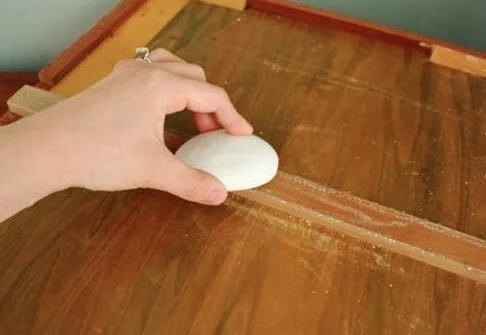
Do you have creaking and noisy wooden drawers in your home, and you don’t know how to fix them? If that is the case, then this home repair hack will be ideal for your problems. Soap is one of the best objects that can silence your noisy wooden drawers once and for all.
Both soap bars and liquid soap are suitable for treating the drawers, as both will effectively resolve the issue. Apply the soap along the wooden drawer’s rails for a few minutes, and you will witness quick results. In case the noise reoccurs, you can repeat this process.
Struggling With Removing Old Stickers? Use A Blow Dryer!

We have the perfect home repair hack to share with you, which will come in handy when dealing with those pesky stickers that often come with new and packaged items. These stickers can be quite bothersome if you prefer your belongings to maintain a clean and polished appearance. Attempting to remove the stickers manually by using your hands is not advisable, as it could potentially result in damage to the object or leave behind residue from the adhesive.
In order to eliminate stickers, one can utilize a blow dryer on the sticker, causing it to heat up and allowing for easy removal. The application of heat will induce the weakening of the adhesive, facilitating a seamless peeling process. After completing this task, your appliances will appear refreshed.
Vinegar Can Revitalize Shower-Heads
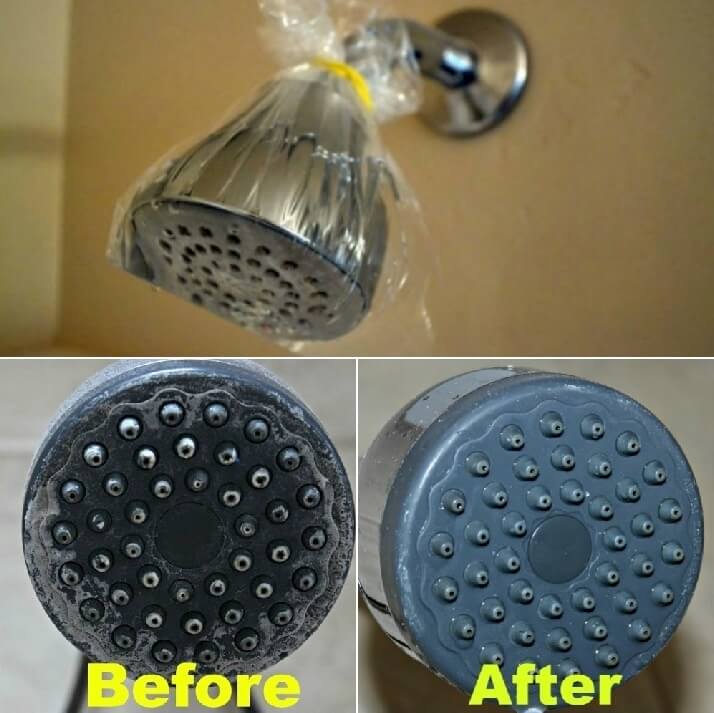
Showerheads often encounter the issue of calcification over time, causing a decrease in water flow. To combat this frustrating problem, one can resort to utilizing vinegar. Although the idea may initially appear peculiar, you will soon discover the remarkable effectiveness of this useful trick.
To enhance the water flow in your shower, simply gather a plastic bag and a bottle of vinegar. Pour vinegar into the plastic bag until it is half full, secure the bag around your showerhead, and leave it in place overnight. In the morning, remove the bag and you will observe a remarkable improvement in the water flow.
Use Baby Powder to Finally Silence Those Noisy Floorboards
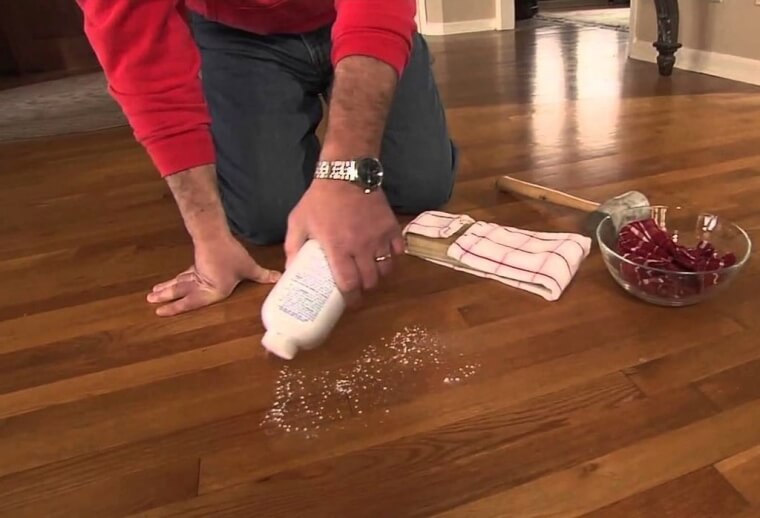
If you have hardwood flooring that has been in your home for an extended period, you may experience an abundance of noise and creaking sounds. Luckily, there is a simple remedy to this issue – the application of a small amount of baby powder. By using baby powder, you can effectively address this noise concern and quiet your floorboards quickly. If you find yourself dealing with this sound problem, it is recommended to acquire a bottle of baby powder.
After obtaining the powder, distribute it by sprinkling it in the spaces between the floorboards, where the wood comes in contact and produces unwanted sounds. Ensure that all crevices are adequately filled with baby powder, and you will no longer encounter the issue of noisy floorboards. This is a prompt and straightforward solution.
Use Soap to Help Screws Go Into Holes
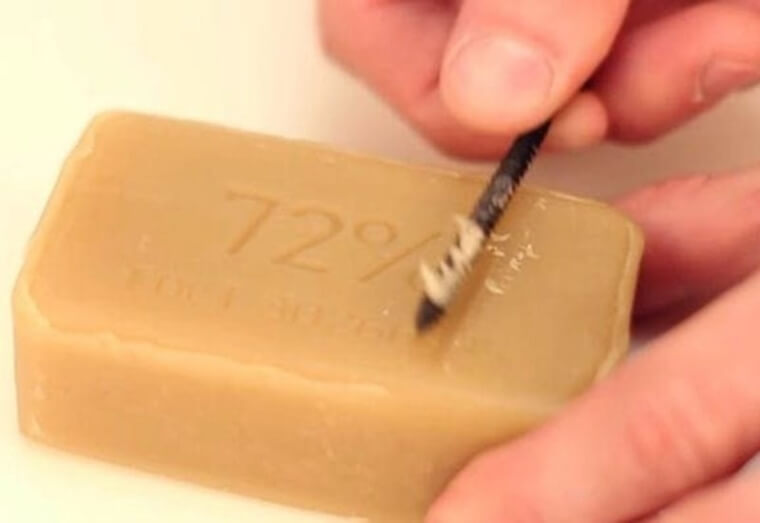
If you’ve encountered a screw that refuses to cooperate and enter a wall, you know just how frustrating and difficult it can be. Thankfully, you can effortlessly resolve this issue by utilizing soap to assist the screws in finding their way into the holes.
Retrieve a bar of soap that is available in your household and proceed to friction the screw against it. It is important to thoroughly rub all surfaces of the screw against the soap, as this will serve to make it more malleable. Once all surfaces have been sufficiently rubbed with soap, attempt to reinsert the screw and it will effortlessly slide in without delay.
Tape Can Make Hanging Predrilled Frames Much Easier
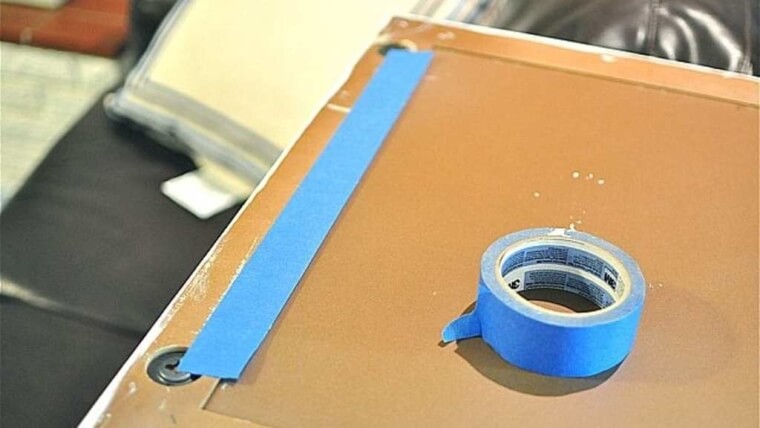
Many people don’t use predrilled frames, but there are always exceptions to this rule. If you want to use a simple way to frame your pictures and you are using predrilled frames, this hack is for you. It will allow you to place the nails in a perfect way to get the most out of them.
Get a masking or artist’s tape and mark the hole placements. After that, you only need to place the tape over the wall and understand where you should place each nail. Doing this will save you time and effort when it comes to placing nails.
Use Your Microwave to Refresh Tape That Is Not-So-Sticky
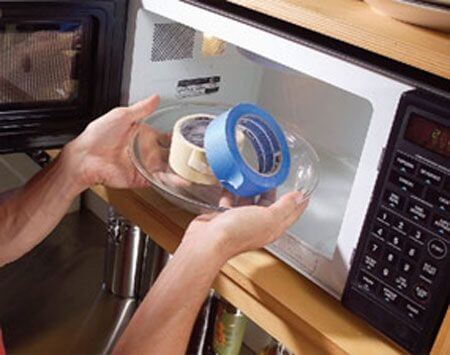
If you have experienced the frustration of using tape that has lost its adhesive properties, you can relate to the annoyance it can cause. It is a common occurrence for tape to lose its stickiness over time. Nevertheless, there is a method you can employ to restore its adhesive properties and make the tape usable once again.
By placing the tape in the microwave for several seconds, the tape can be slightly heated and regain its stickiness. After trying this trick, the tape will be as good as new and ready to be used effectively.
Use Some Ice Cube to Make Your Carpet Dents Even
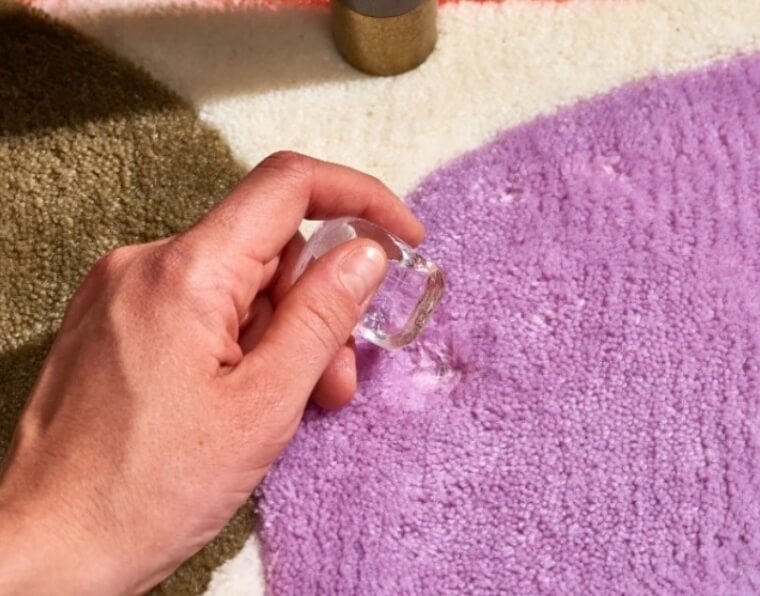
We all love our home decor, especially our carpets, as a lot of thought and decision-making goes into choosing the perfect ones. That is why dents on the carpet because of furniture can cause your heart to break. However, you don’t need to worry too much as this problem can be fixed efficiently.
To eliminate carpet dents, simply put ice cubes on the affected areas and allow them to melt. Afterwards, absorb any remaining water with a cloth and gently use a toothbrush to restore the carpet’s smooth surface.
Use a Mic to Find Hidden Wires
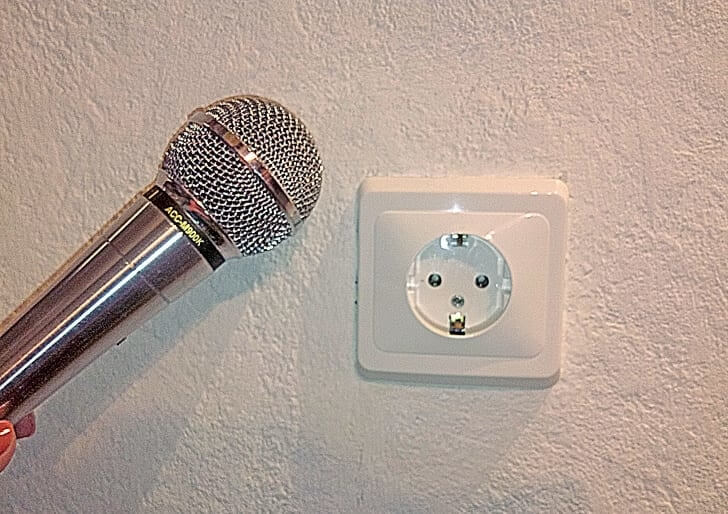
When completing drilling tasks at home, it is important to exercise caution in order to prevent electric shocks or electrocution from hidden wires. Fortunately, there is a straightforward technique using a functional microphone to identify these concealed wires and avoid any potential harm.
To detect concealed wires within a wall, simply connect your microphone to a tape recorder. By positioning the microphone near a certain area, you can identify the presence of hidden wires when the tape recorder emits a humming noise. This indicates the location that should be avoided during drilling.
Keep Your Paint Brushes Fresh With a Plastic Bag
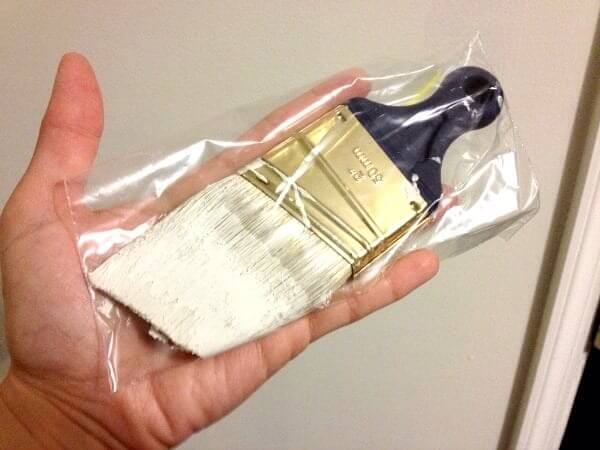
If you have a passion for wall painting, then your paintbrushes are an important tool that requires regular maintenance and careful handling. Failing to clean the brushes properly can lead to the paint becoming hardened, making it difficult to use them again. To prevent this issue, you can utilize a home repair trick that will help keep your brushes in optimal condition.
After you finish using your paintbrush, it’s recommended to place it in a sealed plastic bag. Storing the paintbrush in this way will result in a noticeably softer brush when you use it again, making your painting experience smoother and more precise.
A Potato Can Help You Unscrew a Broken Light bulb
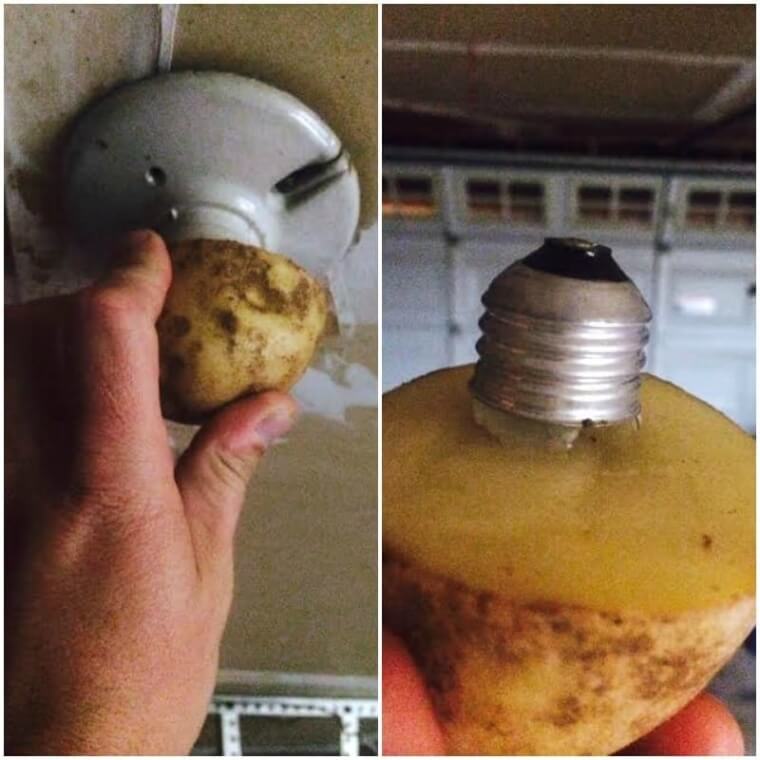
If you have ever tried to remove a socket from a broken light bulb, you know how challenging it can be. If you don’t do it correctly, it will also lead to the light bulb shattering in your hands, leading to injury. That is where our home repair hack using a potato comes in.
Using a potato, slice it in half and insert the soft side into the shattered light bulb. To eliminate the broken portion, simply twist the potato in an anti-clockwise direction and it will easily detach. Potatoes have versatile uses beyond being a food source.
Use Kool-Aid to Diagnose a Leaking Toilet
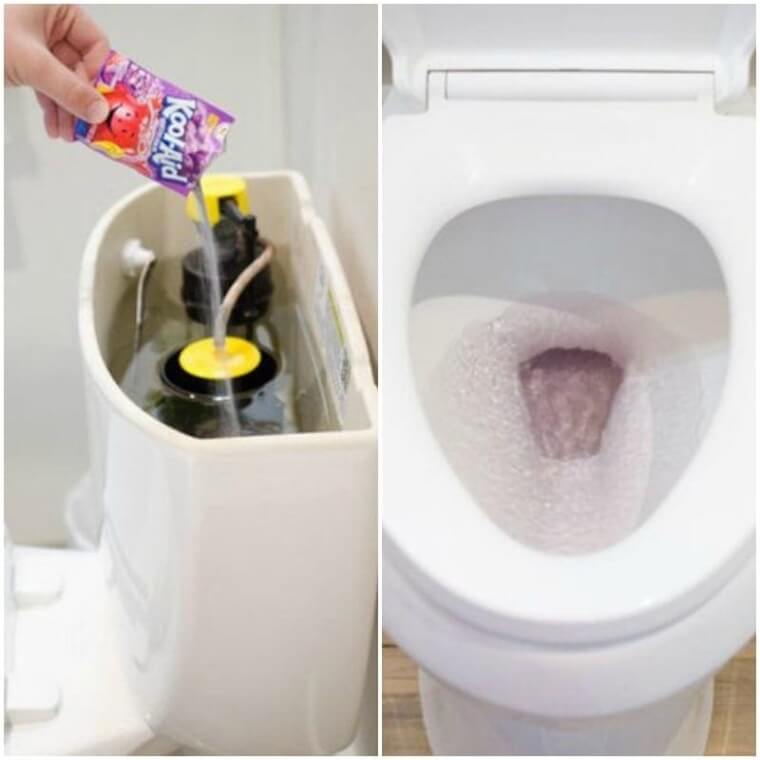
Fixing a leaking toilet can be quite costly if you opt to hire a plumber or time-consuming if you attempt to resolve it on your own. Nevertheless, there is an alternative option to save valuable resources. By diagnosing the issue yourself, you can save both time and money. To undertake this task, all that is needed is the purchase of a dark-colored Kool-Aid.
Pour the Kool-Aid into the tank of your toilet. After waiting for about thirty minutes, examine the toilet bowl. If the water has been tinted, this indicates a leak, whereas if the water remains clear, your toilet is functioning properly.
Close the Gap on a Too-Narrow Bolt with Coins
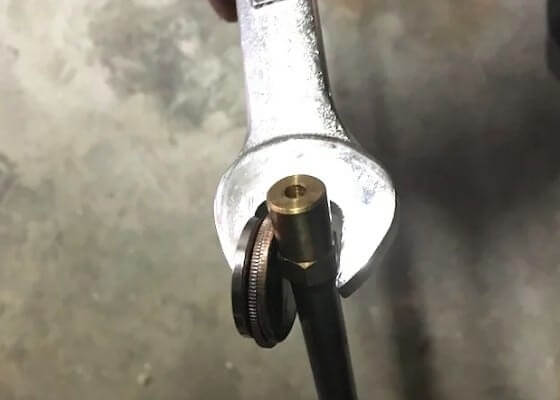
When we require a bolt for a task, it seems that we consistently struggle to locate one of the correct size in our household. Nonetheless, in the event that the bolt is excessively large, it is possible to modify it to meet your requirements using coins. It is highly probable that you have some coins lying around for this specific purpose.
To expedite your work, consider inserting several coins into the space between the bolt and the wrench until it is adequately filled. By doing so, any surplus space will be eliminated, allowing you to proceed with your tasks swiftly. This technique is regarded as one of the most effective home repair tricks for dealing with bolts.
Find Nail Holes with Magnets
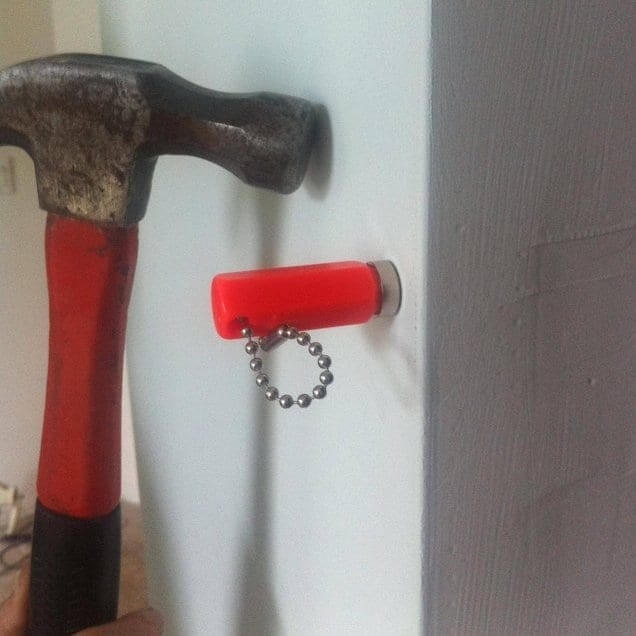
We enjoy altering the arrangement of our home to add some diversity and freshness. One way we do this is by removing pictures or artwork temporarily, but later deciding to rehang them in the same location. Nonetheless, locating the nail holes again for precise reinstallation can be a bit of a challenge.
In the event of such a situation, magnets can be employed to locate nail holes. Rather than creating new holes, one can simply position a magnet over the existing ones. This eliminates the need to search extensively for the correct holes when it comes time to hang frames again.
Unclog Spray Cans with Gasoline
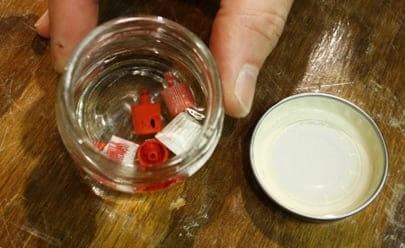
You may be aware of this already, but companies that engage in large-scale production of merchandise employ a strategy known as planned obsolescence in order to restrict the lifespan of products, thereby encouraging continuous purchases. A notable instance illustrating this strategy is observed in the case of a spray can. Despite the noticeable presence of contents within the can, there is a persistent issue with its inability to dispense any substances when used.
To address this problem, immerse the spray can’s nozzle in gasoline for a minimum of fifteen minutes. This will effectively clear any blockages, allowing you to promptly resume using your spray can.
Use Tape to Help You Drill into Tiles
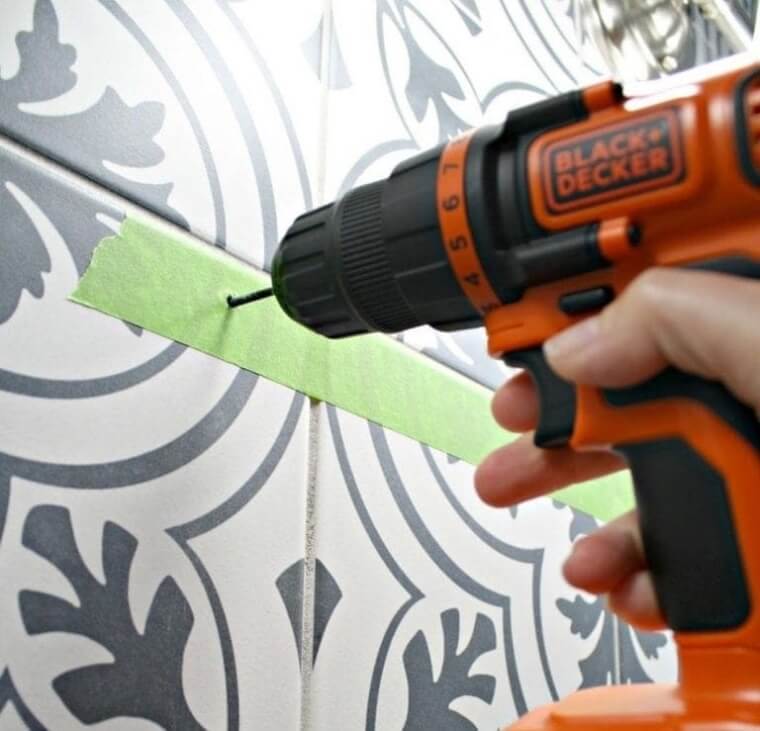
Drilling can be quite difficult due to the inherent risks of injury or damage. This challenge is further heightened when attempting to drill tiles, especially those found in kitchens, bathrooms, or other areas of your home. Therefore, if you have intentions of drilling through tiles, this hack is the ultimate solution for you.
If you want to make the entire drilling experience anti-slip, you will require some tape. First, cover the tile with masking tape and drill over it. Doing this will ensure that the drill is firm and it doesn’t slip from your hands in any place while working.
Fix Squeaky Things with Cooking Spray
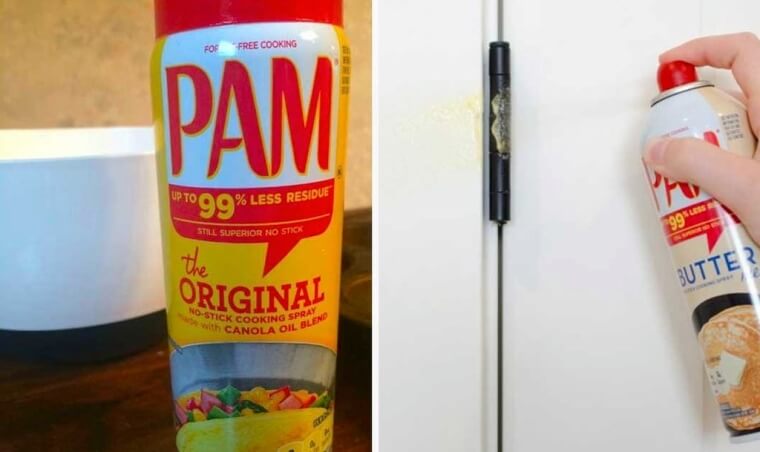
If you have been residing in one location for an extended duration, it is likely that you have encountered the annoying squeaks of doors, cabinets, windows, or drawers. Fortunately, there exists a simple home repair trick to address this problem. It only requires a few moments of your time, making it unnecessary to delay in resolving this issue.
In order to address the squeaking in your home, it is recommended to utilize cooking spray, which is likely to be readily available in your household. Apply the spray onto the hinges of the objects generating the noise to effectively eliminate it within a matter of seconds. Consequently, you will be able to utilize everything without encountering this inconvenience.
Use a Pool Noodle to Avoid Bumping Your Car Door in the Garage
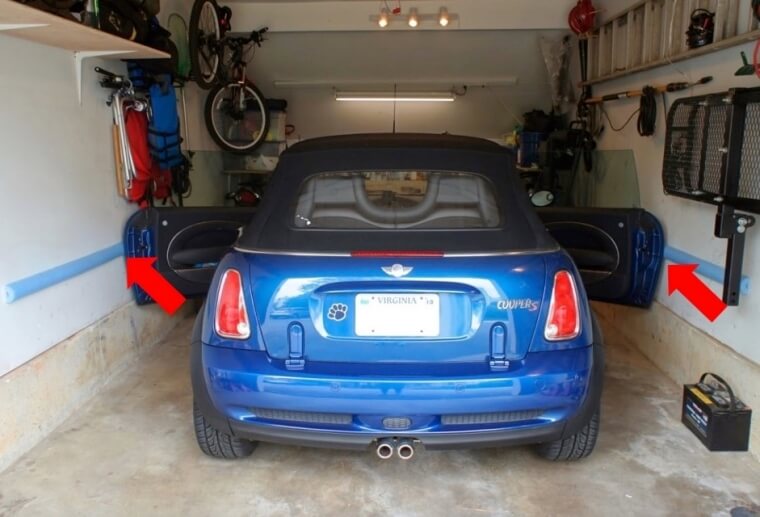
If your home’s garage has limited space, it’s important to learn a suitable method for parking your car without causing any damage. This incredible tip can come to your rescue by enabling you to effortlessly park your car within the confines of your garage. To accomplish this, you’ll require a pool noodle.
To prevent your car door from hitting the wall, you can easily attach a pool noodle to the wall. This will create a barrier that makes it challenging to open the door, thus ensuring that the door doesn’t come into contact with the wall and avoiding any potential damage.
Prevent Rust Circles with Nail Polish
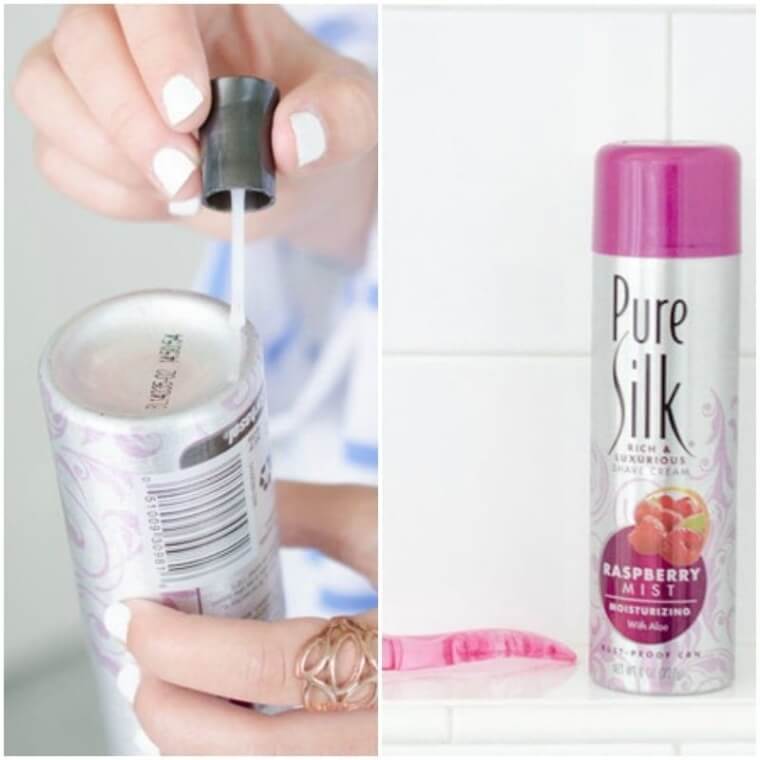
In our homes, we commonly possess a multitude of metal containers, ranging from spray bottles to deodorant cans and various others. Nevertheless, due to the presence of moisture and humidity in spaces like our kitchens and bathrooms, these containers can be prone to developing rust on their surfaces. Additionally, the rust circles may transfer onto the surface on which the container is situated, necessitating the need for their removal.
Apply a layer of clear nail polish to the underside of these metallic containers in order to prevent rust formation. This will ensure that no rust circles appear on any other surfaces.
Use a Plastic Bottle to Prevent a Mess after Drilling
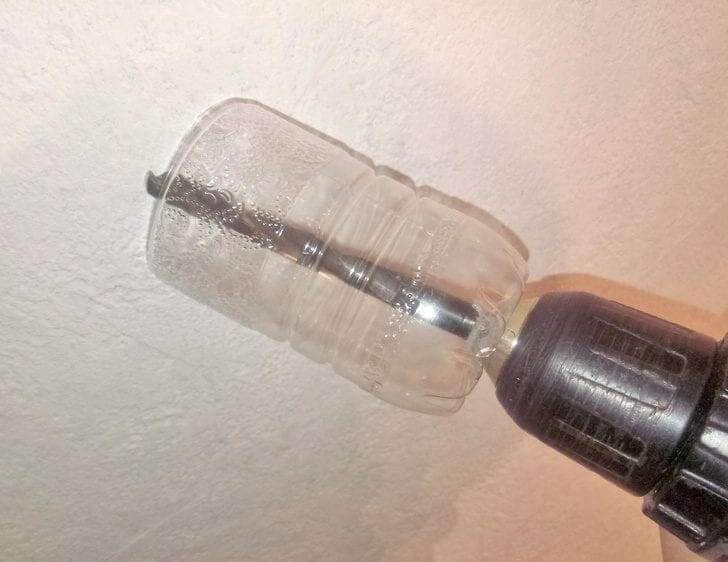
Drilling projects mean that the area is going to be messy, and you will have to spend a lot of time cleaning it up once you are done. That is especially true if you are drilling a high place, such as a ceiling. So, if you don’t want to put sheets all over the drilling room, this hack is for you.
To keep your workplace clean while using a drill, simply attach a plastic bottle to the top by cutting off its tip. This way, any debris created during drilling will be captured within the bottle, saving you the time and effort of having to clean up afterwards.
Remove Stubborn Screws with a Rubber Band
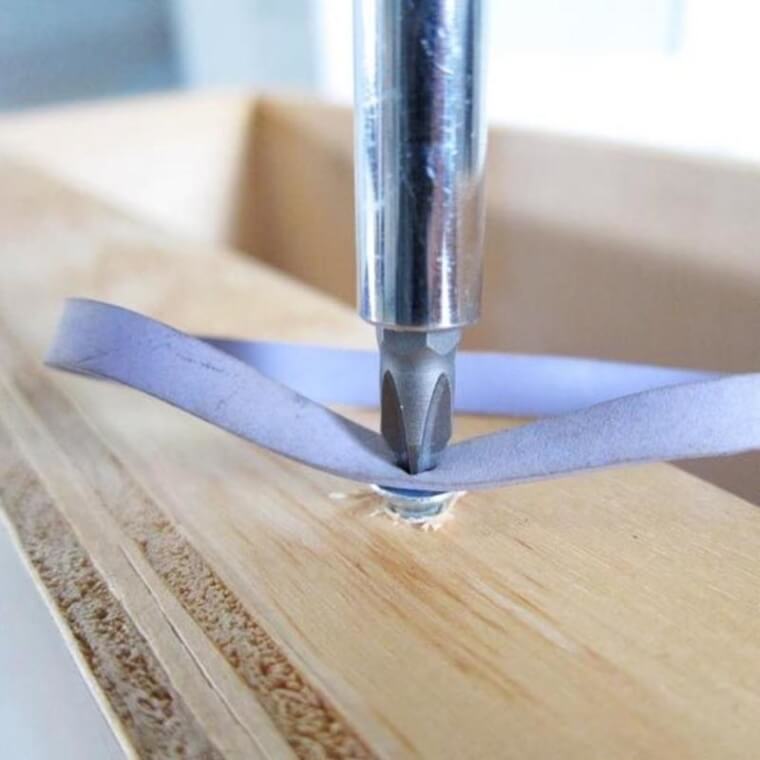
Getting a solid grip on a screw can be incredibly challenging while you are completely engrossed in a DIY project. While losing the grip can happen to anyone, it doesn’t have to be the case. You can easily fix this problem with our best home repair hack you will love.
Obtain a rubber band and insert it between the screw and the screwdriver, resulting in the necessary traction to effectively carry out your work. This strategy has gained popularity as one of the most effective tricks employed by numerous individuals engaging in DIY projects. By adopting this method, you will not only save valuable time and energy in the future, but also reduce the risk of sustaining injuries.
Remove Old Wallpaper with a Water-Vinegar Mixture
Witnessing old wallpapers that have begun to chip and tear in various places is not exactly aesthetically pleasing. If you desire to infuse some new life into your room, one potential solution is to replace the incumbent wallpaper with a brand new one. Nevertheless, countless individuals face difficulties when it comes to removing the existing wallpaper gracefully, all the while striving to avoid any unintentional damage to the underlying wall.
For a seamless wallpaper removal, combine vinegar and hot water in equal proportions, ensuring thorough mixing. Immerse the roller in this solution and begin rolling it onto your existing wallpaper. This method effectively softens the wallpaper, allowing for effortless removal in a short period of time.
Fix Burst or Broken Pipes with a Sealant
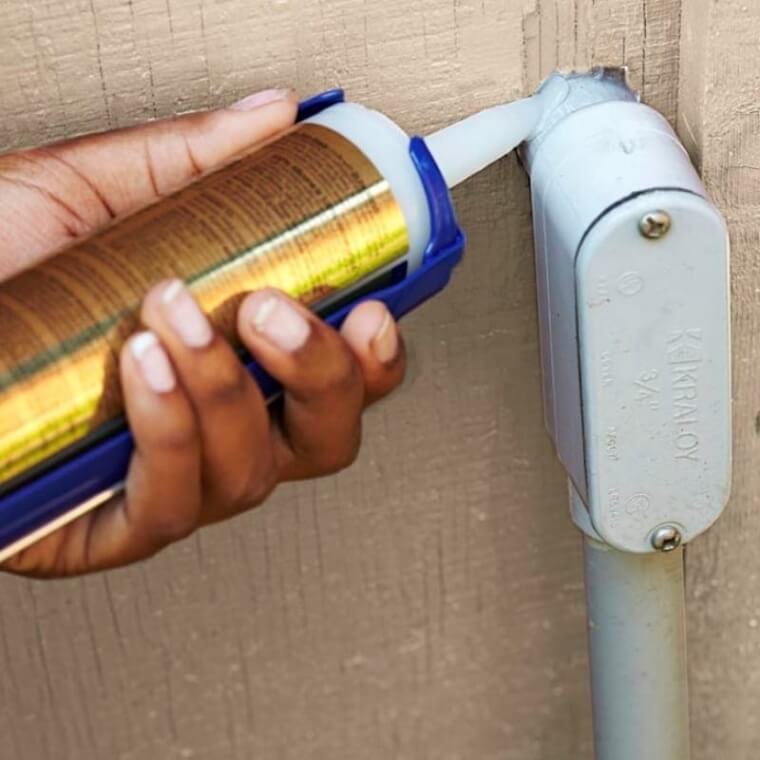
Keep in mind that using a sealant to repair broken pipes is only a short-term fix, but it is the most effective option in urgent situations. Once the immediate issue is resolved, it is advisable to contact a professional to properly address the problem and prevent any potential damage to your home’s plumbing system. This simple workaround is quick and can be completed within a few minutes.
Simply obtain silicone sealant and apply it around the pipe’s hole. By doing so, you will address the problem temporarily until you can request professional assistance to achieve a permanent solution.
Prevent Doors from Slamming With Cabinet Door Bumpers
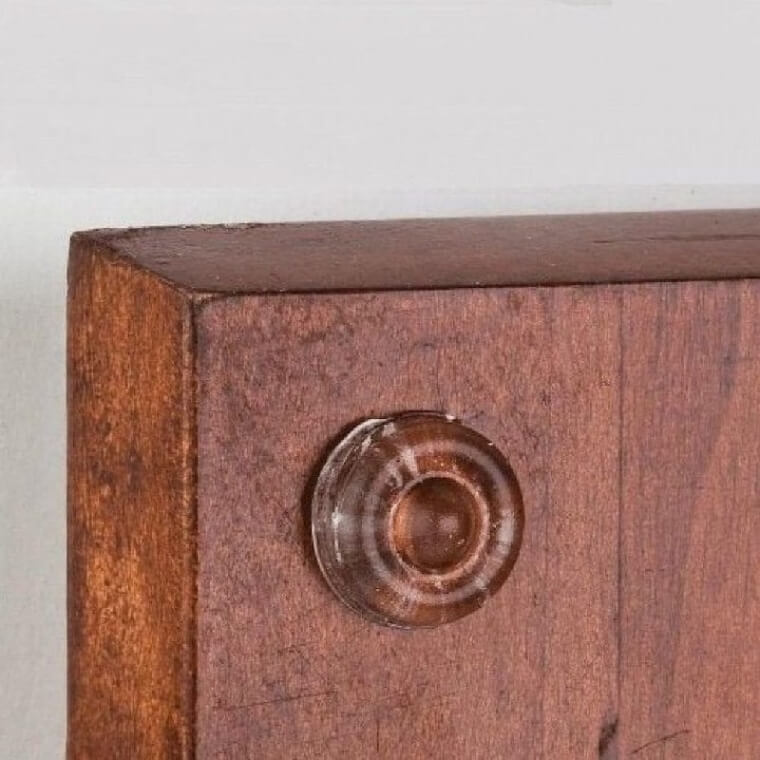
One of the most irritating actions an individual can perform in their home is forcefully closing doors, but there is a solution to permanently eliminate this issue. By having cabinet door bumpers installed in your residence, you can quickly resolve this problem and effectively eliminate the noise caused by door slams.
Simply insert a set of cabinet door bumpers into the door to prevent slamming. This effortless solution effectively cushions the impact, addressing your issue and proving to be one of the most effective and swift remedies for this problem.
You Can Remove Unwanted Scratches with Toothpaste
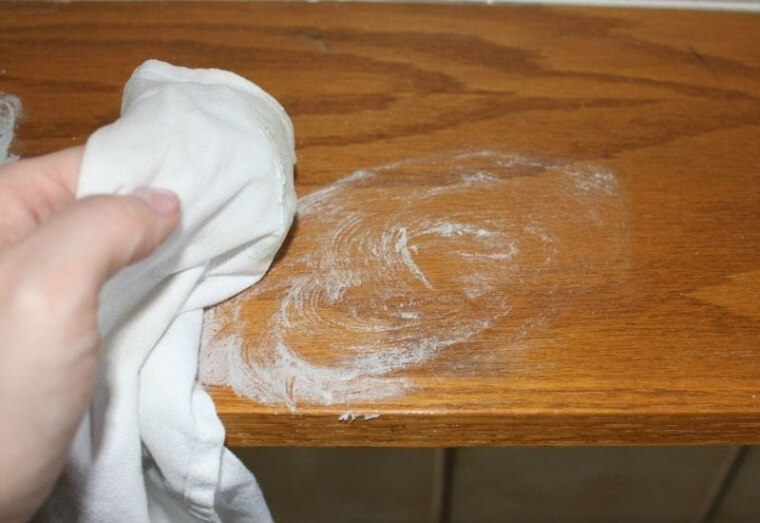
It is normal for everyone with wooden furniture to incur some scratches on their beautiful furniture pieces from time to time. However, many people try to indulge in expensive solutions to fix the problem when they don’t require it. You can also fix the issue with some toothpaste and without spending too much money.
To remove scratches from your wooden furniture in a cost-effective and efficient manner, simply apply a small quantity of toothpaste onto the affected areas. Gently rub the toothpaste in circular motions using a clean cloth. By doing so, you will be able to buff out the scratches without having to invest a substantial amount of money. This remedy offers a wallet-friendly, swift, and successful solution to address this problem.
Iron Dents in Wood to Get Rid Of Them

Start by grabbing a washcloth, soaking it, and ringing out the water to make it perfectly damp. Then place the washcloth over the dent. The water will wick through the wood, so don’t be alarmed as it is perfectly normal. Be sure that you have your iron ready and heated on the highest heating setting prior to placing the damp washcloth. Start by making small circular movements with your iron on the washcloth. Then press it down until the water has completely evaporated from the washcloth. Repeat the entire process until the dent within the wood has completely expanded to its original placement.
Nail Polish Can Fix Small Tears in Screens
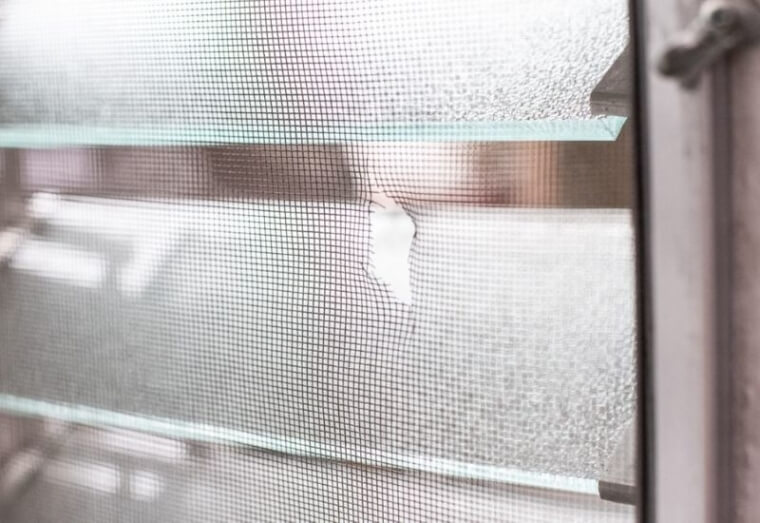
To repair a minor rip in your screen, you only require transparent nail polish. Begin by cleansing and drying the area where the tear is located to prevent any debris from becoming trapped. Then, either utilize a fine paintbrush or the brush that comes with the nail polish to carefully apply a thin layer of transparent nail polish over the screen tear. Be cautious not to contaminate the nail polish by dipping the brush more than once, as this could introduce pollen or dirt. Allow the initial coat to dry, and for swift drying, you can employ a hairdryer on the lowest setting. Apply another coat and allow it to dry.
Use Rubber Bands to Prevent Doors from Shutting
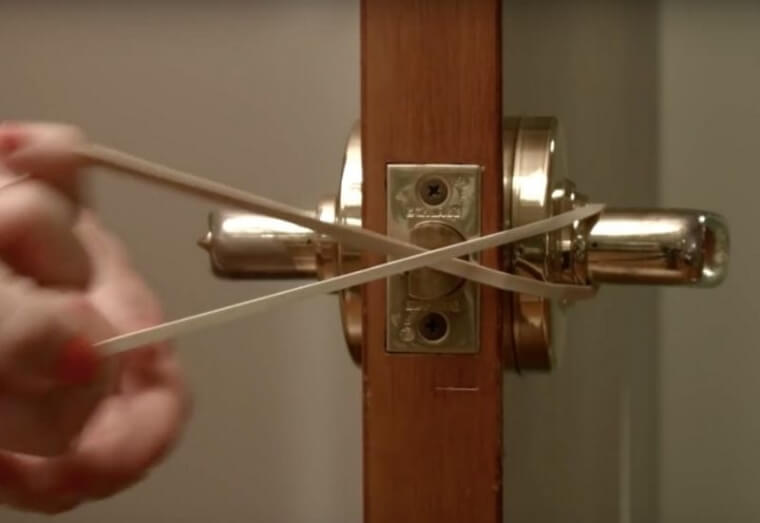
For this to work, you will require a thick rubber band instead of the regular skinny ones. First, keep the door open and loop the rubber band around the door handle on one side. Next, stretch the rubber to reach the handle on the other side and use the same looping technique. Once your rubber band is stretched from one side to the other, ensure that the band runs both above and below the door’s latch. This helps in creating a bumper effect, preventing the door from shutting. If you do not have thick rubber bands, you can use multiple rubber bands to get the same result.
Use a Plastic Bottle to Make a Sprinkler
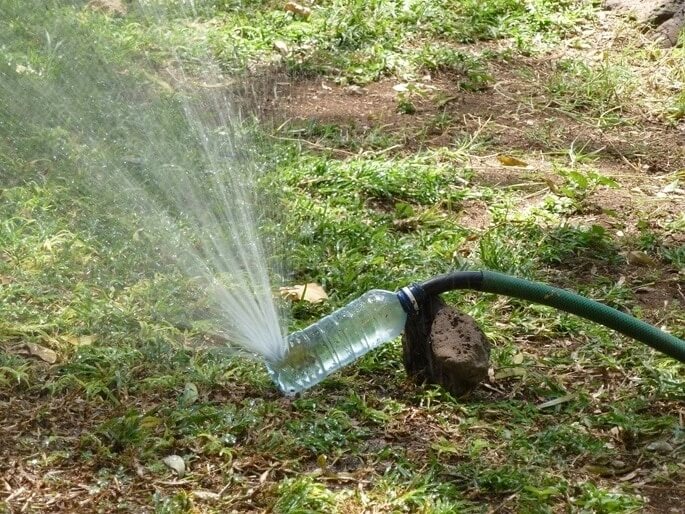
Get yourself a clean plastic bottle, preferably a large one. Make sure it is thoroughly washed. Rinse out any remaining liquids by running tap water through it. With a sharp tool like a compass or a screwdriver, start making approximately 12 to 14 holes on the bottom of the bottle. Attach the end of your hose to the tip of the bottle and secure it with electrical tape. Now, turn on the water faucet, and as the water fills the bottle, the pressure will cause the holes to act as a sprinkler.
The Vegetable Peeler in Your Kitchen Can Be Used As a Screwdriver
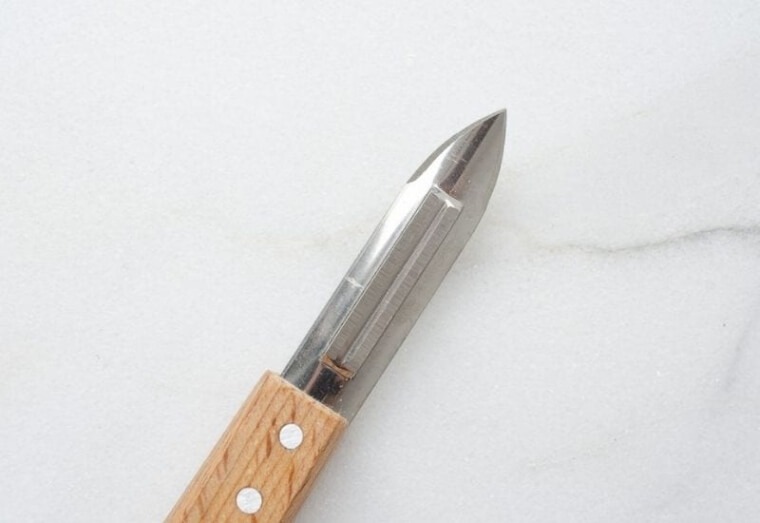
Discover a variety of tools with versatile functions that may surprise you. Take, for instance, the commonly available vegetable peeler, which can be found in most kitchens. A valuable feature of many vegetable peelers is that they come equipped with screwdriver heads, serving as practical substitutes for flathead screwdrivers. It’s important to note, however, that you should use a sturdy handle to prevent any potential accidents. The next time you’re unable to locate your flathead screwdriver, simply make your way to the kitchen and utilize your vegetable peeler instead.
Use Aluminum Foil to Sharpen Scissors
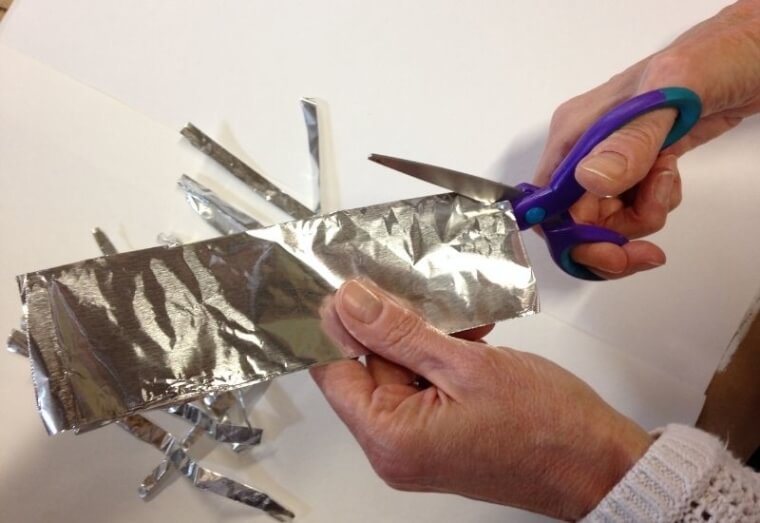
To begin, take a piece of aluminum foil measuring either 8 or 10 inches in length and fold it in half lengthwise. Proceed by using a pair of scissors to cut the folded aluminum foil lengthwise into thin strips. This will allow you to reuse the same piece of foil multiple times, or you may choose to use more than one piece of folded foil if needed. Ensure that the foil comes into contact with every inch of the scissor blade by using complete strokes. Once this step is finished, obtain a paper towel and dampen it with warm water. Use the damp towel to wipe the scissors and remove any debris.
Use a Regular Pencil to Free a Stuck Lock
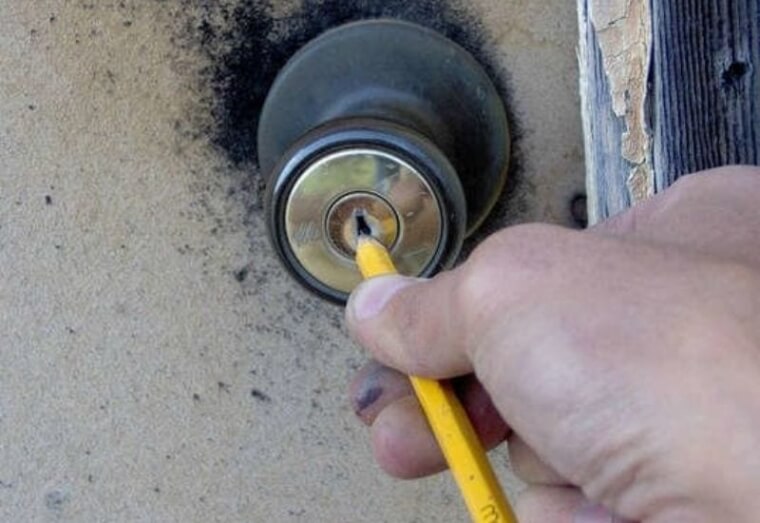
To make a key work again in a stuck lock, lubrication is typically needed. It is important to avoid using graphite as a liquid lubricant, as alternatives are more suitable. However, finding graphite powder can sometimes be challenging, especially during urgent situations. In such cases, a practical solution is to utilize a graphite pencil to lubricate the lock. It is advisable to refrain from inserting the pencil directly into the lock, as it may result in the tip breaking and causing further complications. Instead, rub the graphite pencil on the key and insert it into the lock. To unlock the stuck lock, repeat this process a few times.
Remove Snags in Woven Rugs to Make Them Look Like New
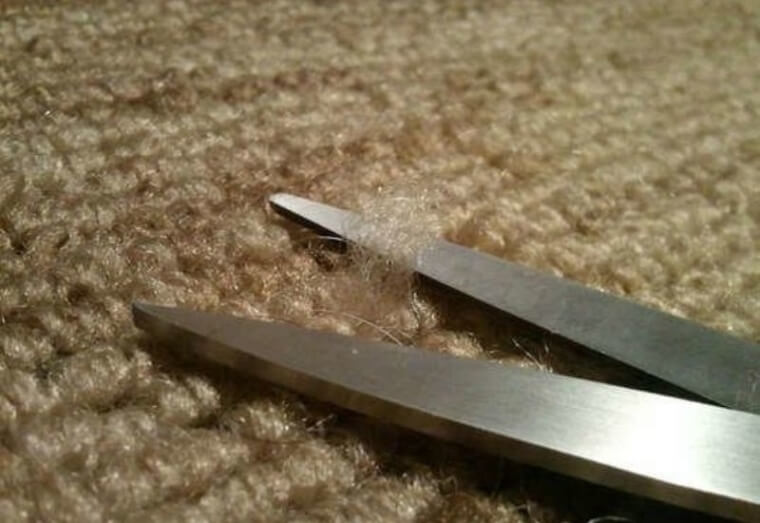
To effectively eliminate snags from your rug without causing any harm, follow these steps. To begin, ensure that any section you intend to trim with scissors is at least a half-inch in length. This will prevent any unintended damage to the rug during the cutting process. Once you have identified the snags, hold the scissors in a parallel position with the rug’s surface and carefully cut off the snag. Afterward, carefully tuck the trimmed ends into the surrounding fibers of the rug. In order to firmly secure the ends and conceal them from view, you may opt to utilize a small amount of hot glue. For longer snags, it is recommended to place masking tape on either side of the snag, creating a kind of trench, before proceeding with the trimming and gluing process.
Use Zip Ties To Unclog Blocked Drains
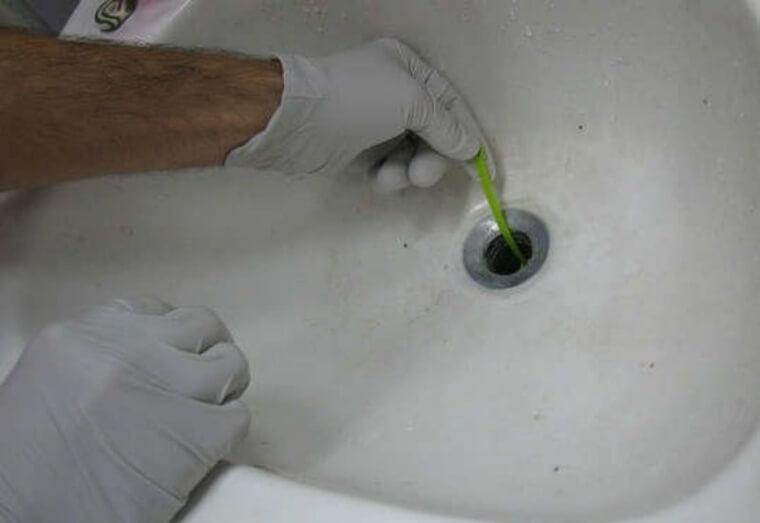
To accomplish this task, you will require a wire cutter and multiple zip ties. If you possess short zip ties, you can overcome their limited length by joining two together. Continuously connect the zip ties until they create a single elongated tool, enabling easy access to unclog the drain. Utilizing the wire cutter, cut diagonally through the zip ties, stopping halfway. Ensure that each cut faces downwards and alternates. Then, grasp the split end and bend it outward, creating a barb shape. Subsequently, insert this elongated tool into the drain and maneuver it in both circular and vertical motions to retrieve any debris. Remove the tool from the drain and repeat this process until no remnants of debris are left.
Use Cat Litter to Remove Oil Stains
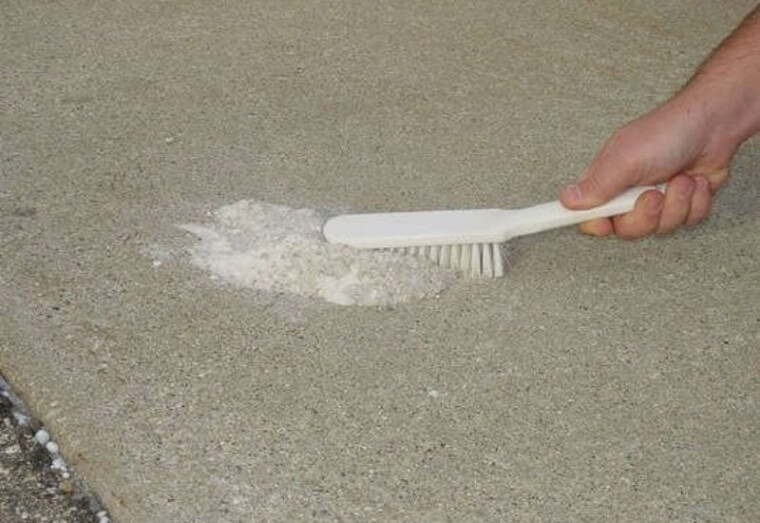
If a fresh oil stain has appeared on your driveway, then don’t wait for it to stick; immediately grab some cat litter and get to work. First, cover the entire oil stain with a layer of cat litter and let it sit for a minimum of 30 minutes. If the stain isn’t too big, 30 minutes should be enough. Consider leaving the cat litter on the oil stain overnight if the stain is large. Next, sweep it all up and grab some detergent and a bristle brush. Start brushing in the detergent over the oil stain while applying pressure. Rinse the detergent off using water. Repeat the entire process if necessary.
Measure Out the Depth of Holes with Some Tape

To determine the depth of holes using tape, gather some masking tape, a drill bit or a machine, and follow these steps: First, cut a lengthy strip of masking tape and carefully encircle it around the drill bit. Ensure that there is ample room for the drill bit to penetrate the material and create a hole. Also, make certain that the masking tape wrapped around the drill bit is sufficiently thick to provide noticeable feedback once it reaches the material. After creating the hole, measure the distance from the drill bit’s tip to the point where the masking tape starts.
Use a Small Magnet to Keep Nails in Place
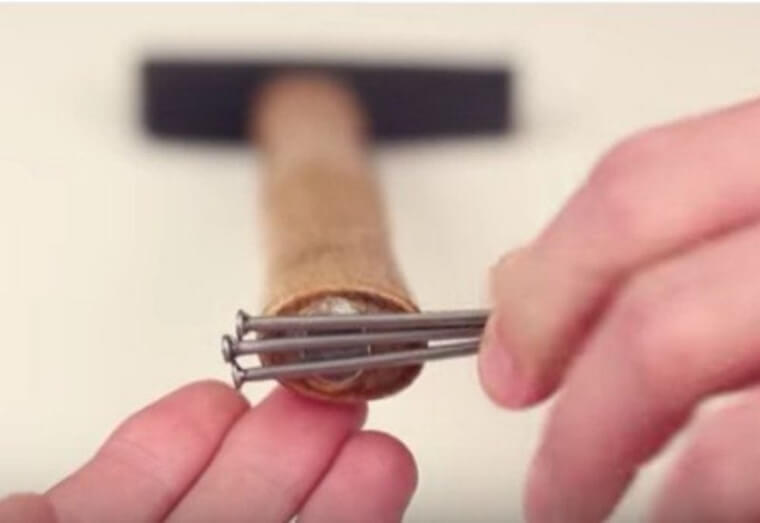
Many people face difficulties when attempting to hold both a hammer and nails when hammering in nails to hang something up. As a result, you often see individuals resorting to holding nails in their mouths, which can be unsafe. A helpful solution to keep nails secure while in use involves attaching a small magnet to the bottom of your hammer. This technique is most effective with hammers that have wooden handles. Begin by creating a small indentation, resembling a pit, at the bottom of the hammer. The size of this indentation should match that of a small magnet. Following this, carefully apply a minimal amount of super glue onto the indentation and insert the magnet securely. Once the magnet is firmly in place, you are ready to proceed with your project.
Use Foil to Line Paint Your Trays
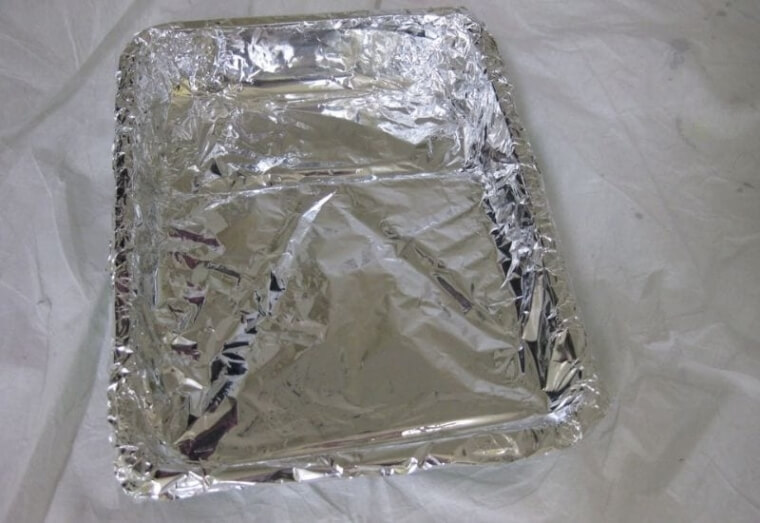
A helpful tip for roller painting your walls using a paint tray is to make clean-up easier by covering the tray with aluminum foil. This will prevent the paint from drying directly on the tray, as it will dry on the foil instead. Using aluminum foil as a protective layer for your paint tray can be highly effective. Begin by cutting a piece of foil that is slightly larger than your tray. Gently press the foil onto the tray so that it takes the shape of the tray. To keep it securely in place, fold the excess foil over the edges of the tray.
Remove Excess Paint with A Few Rubber Bands
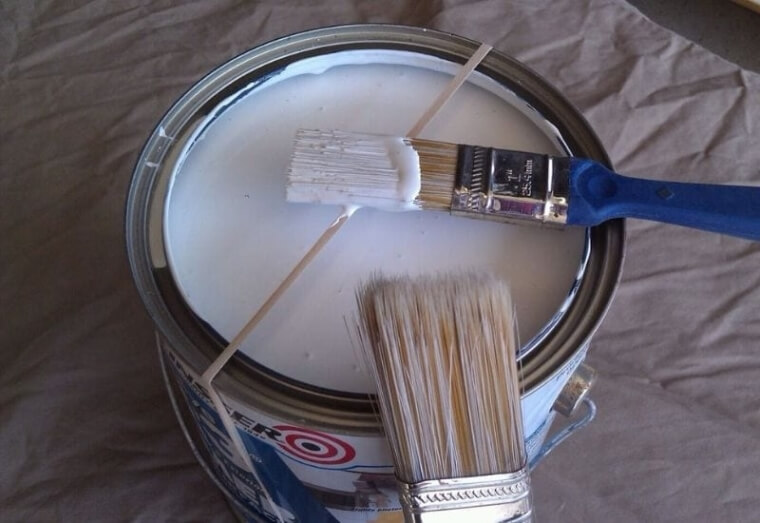
Make sure that you keep a couple of thick and long rubber bands at hand when you’re working on a painting task. This is because the rubber bands will help you remove excess paint from your paintbrush and allow it to fall directly into the paint can. Grab your rubber band and start stretching it around your paint can, starting from the top and carefully around the bottom. Be sure to do this step with care as you don’t want your paint can to spill over. Then grab the paintbrush from which you want to remove the excess paint and wipe it across the rubber band.
Make Rowdy Pipes Quiet by Turning off The Water
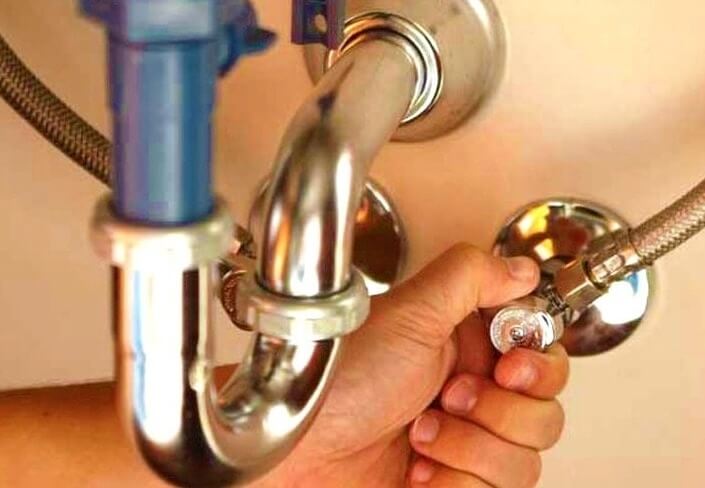
If you are someone who is struggling with dealing with consistently rowdy and loud pipes, then we have a great temporary solution. Loud and rowdy pipes are not to be underestimated as they can easily tamper with the peace you have at home, enough to disrupt your focus and attention. Not to mention that it is a big struggle to deal with the rowdy pipes when you are trying to sleep. The issue arises when pinpointing exactly which pipe is that is causing the trouble. So, a great way to combat the issue is to turn off the main water supply of your home when you know the water won’t be in use.
Use Liquid Soap and Water to Unclog a Toilet

To start, begin by measuring one gallon of water and placing it on the stove to heat. While the water is heating, add your liquid soap. After the water has heated significantly, remove it from the heat and pour it carefully into the blocked toilet. Remember to remove the water from the stove before it reaches boiling point. Next, wait approximately 10 to 15 minutes, giving the hot water and liquid soap mixture time to loosen the blockage in the toilet. Finally, flush the toilet to ensure the pipe is fully cleared.
Plan Out Your Gallery Wall with Newspapers
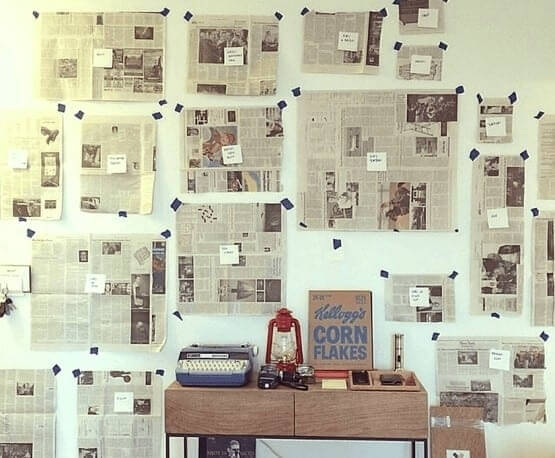
With the use of a newspaper, you can easily plan out the layout of your gallery wall and create a template to ensure that you are satisfied with the planning. Start by placing a frame over the newspaper and outlining it using a black marker. Take the frame off and cut the shape that you just outlined and label it with a number that you have given to that particular frame. Once you have completed this process with each frame, grab painter’s tape and tape the newspaper cutouts onto the wall. The painter’s tape will allow you to remove the newspaper without damaging the wall’s paint.
Use Plastic Tubes to Stop the Noise Created By Fan Chains
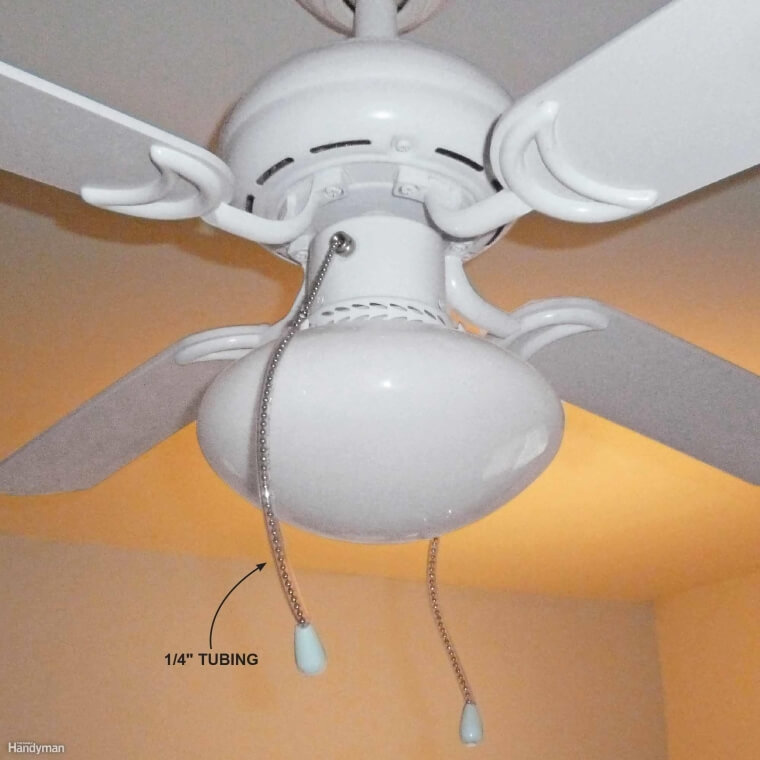
It doesn’t matter whether your fan is perfectly leveled; the flow of air created by the fan itself can cause the pull chains of the fan to come into contact with the fan itself, which creates an incredibly annoying sound. You can solve this issue and eliminate the noise with the use of a plastic tube. First, turn your fan is off and carefully remove the fan chains. Then grab a plastic tube that has a diameter of a quarter of an inch and slide your fan chains into it. Then simply secure the fan chains back onto the fan and enjoy your noise-free air.
Use Rope to Silence Water Drips in Gutters
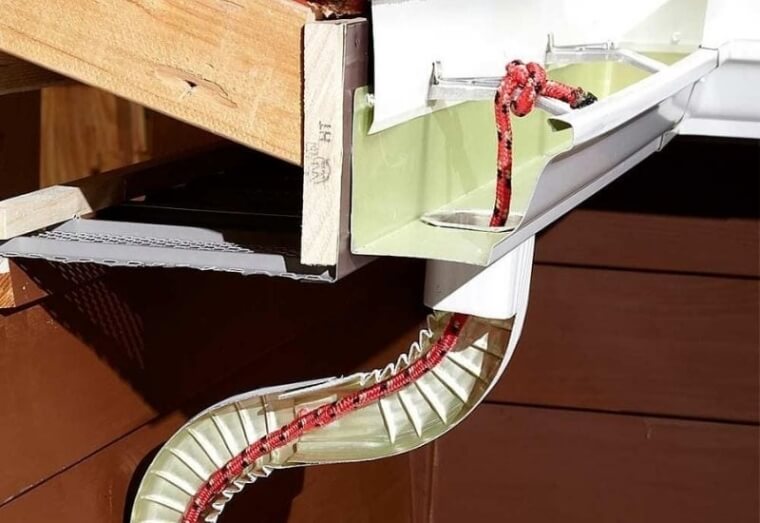
Noisy gutters can easily become a nuisance. These noisy gutters are usually caused by a water drip within it and this issue can easily be resolved with the use of a rope made of nylon. Start by attaching one end of the nylon rope on the top of the downspout of the gutter and let it run down. This is because once the nylon rope comes in contact with the nylon rope, the water will begin to use the rope as a pathway within the gutter, which eliminates the noise caused by water drips. Then grab a sponge and insert it in the downspout’s corners to absorb the water drips.
Use a Baking Soda and Vinegar Mix to Unclog the Sink
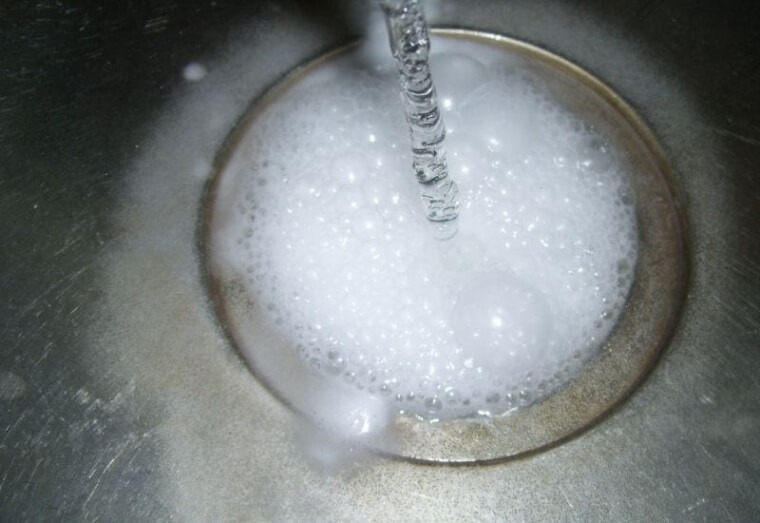
A fantastic way to clear a clogged sink is by using a mixture of baking soda and vinegar, which are commonly found in most kitchens. To begin, boil water and pour it down the blocked drain. Then, prepare a solution consisting of one cup of baking soda and one cup of vinegar, resulting in a total of two cups. Carefully pour this solution down the drain and immediately seal the drain with a plug. Allow the mixture to sit for approximately 5 to 10 minutes, giving you enough time to boil water. Once the designated time has passed and the water is boiling, pour it down the drain. This will create a bubbling reaction that effectively clears the clog in your sink.
